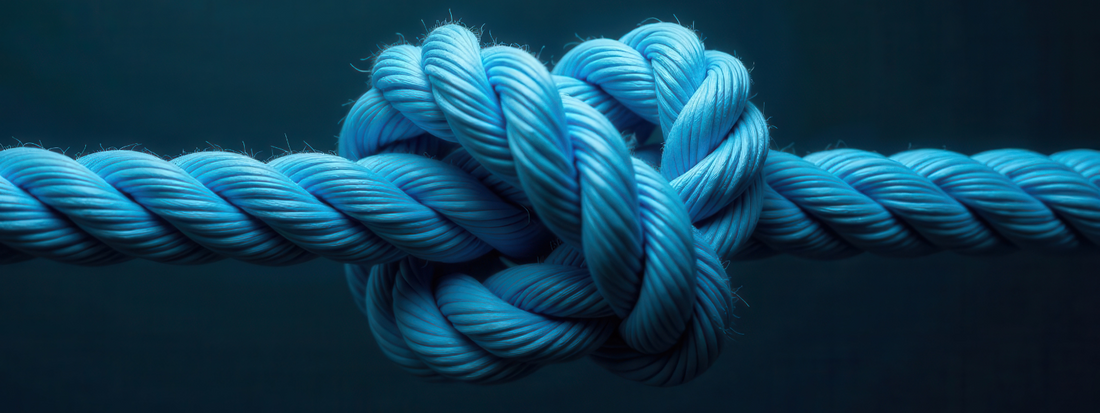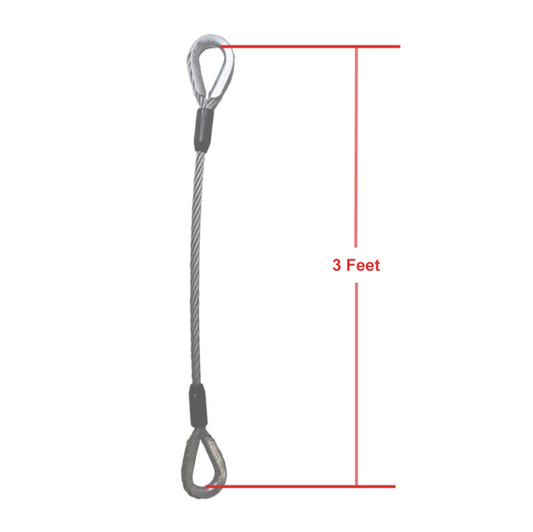
Synthetic Rope Maintenance & Care: Safety, Strength & Longevity
Synthetic ropes have become the go-to choice for climbing, lifting, rigging, and mooring thanks to their high strength-to-weight ratio, flexibility, and resistance to corrosion. Whether you’re scaling a cliff, securing a vessel, or lifting heavy loads, your rope is only as reliable as the care it receives.
At Hercules Crane & Lifting Supplies, we know that maintaining synthetic rope properly is the key to maximizing performance and keeping people and equipment safe. This guide covers everything you need to know about synthetic rope maintenance — from handling and cleaning to inspection and retirement.
Why Synthetic Rope Maintenance Is Crucial
Synthetic ropes (like polyester, nylon, Dyneema®, or polypropylene) are engineered for strength, but they’re still vulnerable to damage if not cared for. Common hazards include:
-
Abrasion from sharp edges or rough surfaces
-
UV degradation from prolonged sun exposure
-
Chemical exposure from oils, acids, solvents, or fuels
-
Moisture and saltwater that can weaken fibers over time
-
Shock loads and overloading that exceed rated capacity
Routine care ensures your rope maintains its designed load capacity, remains flexible, and performs reliably across its full service life.
Handling Synthetic Ropes the Right Way
How you use your rope directly impacts its lifespan:
-
Avoid dragging over edges. Use rope protectors, sleeves, or edge guards whenever possible.
-
Prevent kinks and tight bends. Coiling too tightly or tying improper knots can distort fibers and weaken the rope.
-
Use proper hardware. Carabiners, shackles, pulleys, and thimbles should be the right size and smooth to prevent abrasion.
-
Control shock loads. Never allow a rope to snap taut suddenly — this creates internal stress that shortens its life.
For climbing ropes, remember that falls, even minor ones, contribute to cumulative wear. For lifting or mooring, avoid sudden jerks or overloads that can compromise rope integrity.

Cleaning Synthetic Rope
Dirt, grit, and salt crystals act like sandpaper, wearing down fibers from within. Regular cleaning keeps your rope safe:
-
Shake or brush off debris. Use a soft brush or your hands to remove surface dirt.
-
Wash with mild soap. Submerge in lukewarm water with a rope-safe, non-detergent soap. Avoid bleach and harsh chemicals.
-
Rinse thoroughly. Soap residue can attract dirt and moisture.
-
Air dry only. Hang ropes loosely in a shaded, ventilated area. Never use a dryer, heater, or direct sunlight, which can damage fibers.
Climbing ropes especially should be cleaned after exposure to mud, chalk, or salt environments. Mooring ropes need thorough rinsing after saltwater use.
Proper Storage Practices
Storage can make or break a rope’s longevity:
-
Cool, dry, shaded areas. UV rays are a major enemy of synthetic rope. Store away from sunlight and heat sources.
-
Ventilated environment. Avoid damp basements or sealed bags that trap moisture.
-
Chemical-free zones. Keep ropes away from fuels, oils, solvents, and corrosive chemicals.
-
Avoid compression. Store loosely coiled or on wide spools. Tight bends or long-term compression can deform rope fibers.
For climbing ropes, a rope bag is a must to keep dirt out and prevent UV exposure. For rigging and mooring ropes, large reels or racks are best.
Inspecting Synthetic Rope
Routine inspections are the most important step in rope maintenance.
Visual & Physical Checks
Before and after each use:
-
Look for frayed or cut strands on the sheath.
-
Run your hands along the rope to feel for soft spots, stiffness, bulges, or flat areas — signs of internal damage.
-
Check for discoloration (UV or chemical exposure).
-
Note any changes in flexibility — a rope that feels unusually stiff or “crunchy” may be compromised.
Frequency
-
Climbing ropes: inspect before every climb and after any significant fall.
-
Rigging/lifting ropes: inspect before each use, with detailed checks on a schedule (e.g., weekly or monthly depending on usage).
-
Mooring ropes: inspect frequently during seasonal use, especially after storms or prolonged saltwater exposure.
If any issues are detected, retire the rope immediately.
Rope Rotation & Record Keeping
Synthetic ropes used regularly should be tracked:
-
Rotate ropes in high-use environments so no single rope bears the brunt of all tasks.
-
Maintain a rope log including purchase date, type of use, environmental exposures, falls (for climbing), and results of inspections.
-
Establish retirement guidelines based on both time and condition. Many manufacturers recommend retiring climbing ropes after 10 years regardless of use, or sooner with heavy use or damage.
When to Retire Synthetic Rope
Retire your rope if you notice:
-
Frayed, melted, or cut fibers
-
Core showing through sheath (for kernmantle ropes)
-
Significant loss of flexibility or diameter changes
-
Stiffness, flat spots, or bulges
-
Exposure to chemicals, fire, or extreme heat
-
For climbing ropes: after a major fall or multiple moderate falls
Never gamble with a rope’s integrity. Replacing a rope is far cheaper than risking an accident.
Disposal & Recycling
Retired ropes should be disposed of responsibly:
-
Cut into short sections to prevent reuse in lifting or climbing.
-
Repurpose for non-critical uses like dog leashes, garden projects, or craft applications.
-
Recycle where possible. Some programs accept nylon or polyester ropes for reuse.
Final Word
Synthetic ropes are strong, versatile, and vital tools for climbing, lifting, rigging, and mooring. But their safety and performance depend entirely on proper maintenance. With correct handling, regular cleaning, careful storage, and thorough inspections, you’ll extend your rope’s lifespan while keeping your team, gear, and vessels safe.
At Hercules Crane & Lifting Supplies, we supply high-quality synthetic ropes and the expertise to help you care for them. Whether you need climbing ropes, rigging lines, or mooring solutions, we’re here to support your safety and performance every step of the way.








